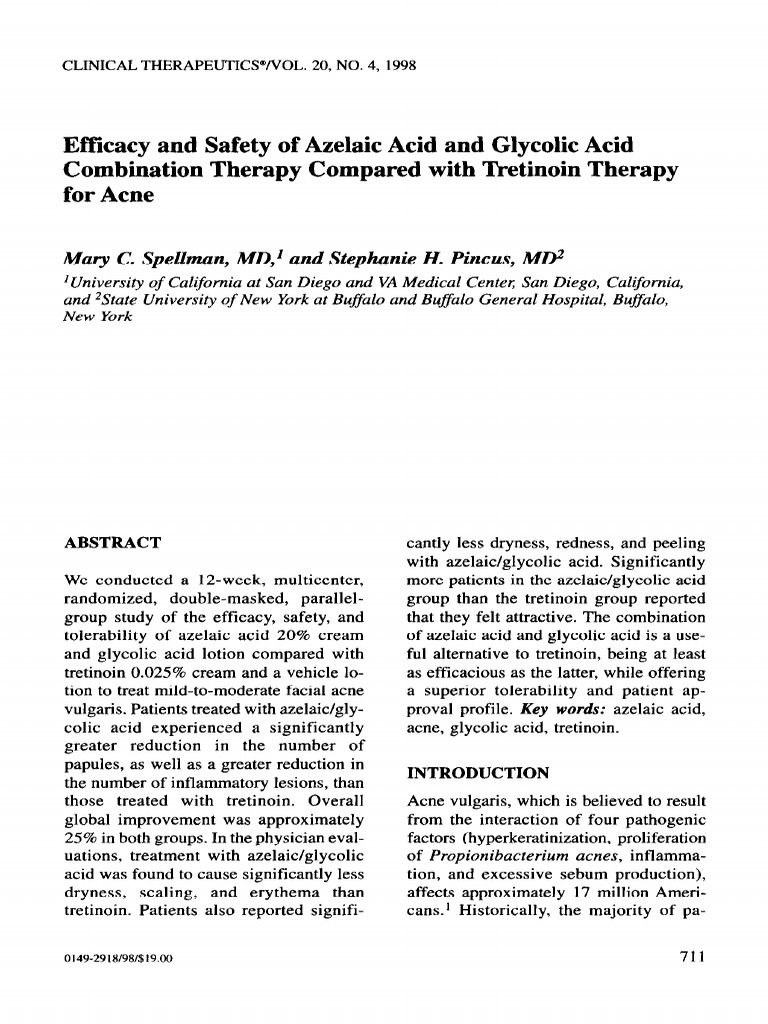When it comes to skincare, consumers are frequently on the hunt for the ultimate combination of ingredients that will yield luminous, youthful skin. Among the myriad of products available today, two ingredients often emerge as perennial favorites: glycolic acid and azelaic acid. But a pressing question arises, one that might leave you scratching your head: can I use glycolic acid with azelaic acid? As we delve into the intricacies of these two compounds, let’s explore their unique properties, potential synergies, and the nuances involved in their combined use.
To embark on this journey, it’s vital to understand what these acids are and the roles they play in skincare. Glycolic acid, a member of the alpha-hydroxy acid (AHA) family, is well-known for its exfoliating properties. Derived from sugarcane, this acid leverages its small molecular structure to penetrate deeply into the skin, effectively sloughing away dead skin cells and revealing fresh, new skin beneath. Its refined ability to enhance cell turnover makes it a popular choice for individuals dealing with texture irregularities, dullness, and fine lines.
On the other hand, azelaic acid is often lauded for its multifaceted therapeutic benefits. It is a naturally occurring dicarboxylic acid found in grains like barley and wheat. Renowned for its anti-inflammatory, antibacterial, and antioxidant properties, azelaic acid effectively addresses conditions such as acne and rosacea while simultaneously brightening the complexion and improving overall skin tone. Given their distinct yet complementary functions, one may wonder: why not combine the two for a skincare concoction that tackles multiple issues at once?
However, before diving headfirst into this skincare synergy, it’s essential to tread cautiously. Despite the allure of mixing these powerful ingredients, they interact differently with the skin. Each acid boasts its unique pH levels and activity range, which necessitates a delicate balance. Could your enthusiasm for a radiant glow backfire, resulting in irritation or sensitivity? Therein lies the potential challenge.
When using glycolic acid and azelaic acid together, the first concern is the risk of increased irritation. Glycolic acid, particularly at higher concentrations, can be potent, leading to redness or peeling, especially for those with sensitive skin. Introducing azelaic acid, which can also provoke a reaction in certain individuals, raises the stakes. It’s crucial to consider your skin type and previous experiences with acids. Beyond sensitivity, the possibility of over-exfoliation is another significant factor. Combining the exfoliation power of glycolic acid with the properties of azelaic acid can lead to a compromised skin barrier if applied excessively.
So, how can one enjoy the benefits of both without succumbing to irritation? The solution lies in moderation and strategic application. Consider alternating days for glycolic acid and azelaic acid use or employing one in the morning and the other at night. This approach allows your skin to reap the benefits of both ingredients without overwhelming it.
Moreover, integrating hydrating and soothing agents into your regimen can bolster your skin’s resilience. Ingredients such as hyaluronic acid or ceramides work to restore hydration and support the skin barrier, which is especially crucial when using potent acids. Furthermore, always use sunscreen during the day, as both glycolic acid and azelaic acid can increase photosensitivity, putting your skin at risk of sun damage.
But what if layering isn’t your style, and you still want to incorporate both into your skincare routine? Another versatile approach could be exploring formulations that already combine these acids into one product. Some skincare brands have crafted serums or creams that feature both glycolic and azelaic acids in balanced concentrations. This not only simplifies the application process but can also ensure a thoughtfully curated formulation that reduces the risk of irritation.
While the combination of glycolic acid and azelaic acid holds immense potential for revitalizing the skin, it’s essential to embark on this adventure with a discerning eye. Understand your skin’s unique needs, and proceed with caution. A patch test can also serve as a beneficial step in establishing tolerance. Applying a small amount of product on your skin—perhaps on your jawline or behind your ear—can provide insights into how your skin will react to the combination.
In conclusion, the interplay between glycolic acid and azelaic acid is a fascinating topic in the realm of skincare. The potential for enhanced skin texture, clarity, and radiance is tantalizing. Still, caution is paramount. With mindful application, attentive to your skin’s responses, and perhaps a touch of experimentation, you can harness the power of these two acids without compromising your skin’s integrity. In this pursuit of beauty, the key is balance—finding what works for you, and committing to your skin’s health above all.
